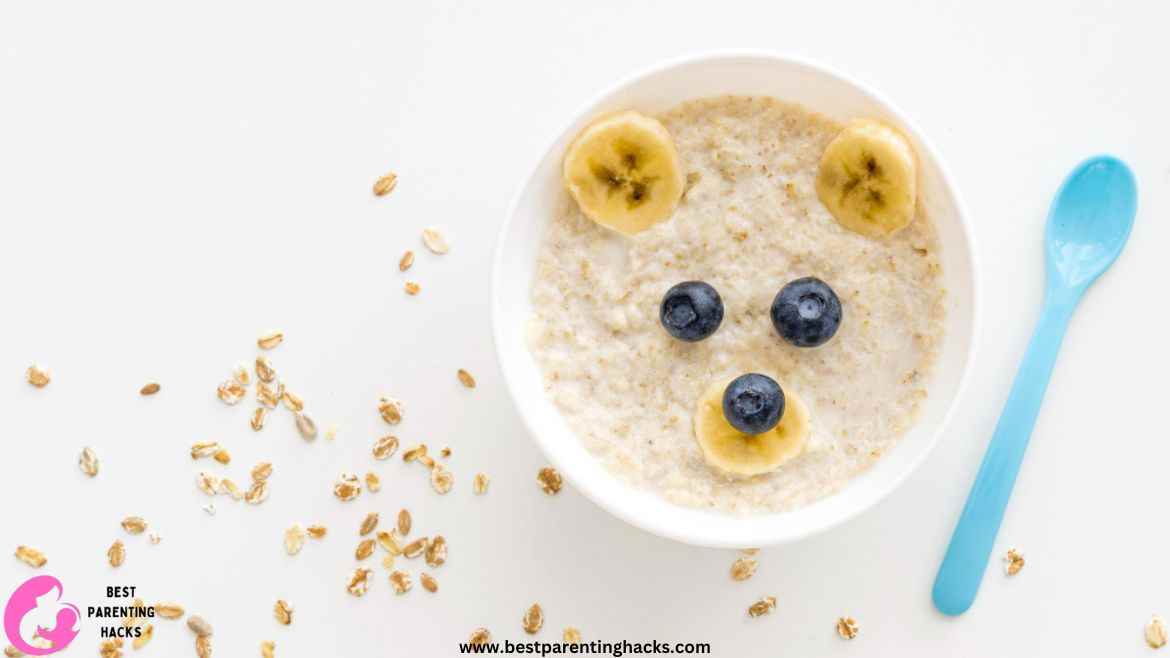Table of Contents
A crucial milestone in your infant’s growth and progress occurs when they begin to consume solid foods. Oatmeal is a common and wholesome option among the many possibilities for a baby’s first solid food. It is the perfect first food for babies switching from breast milk to solids because of its mild texture and balanced nutritional composition.
In this lesson, we go over how to make baby oatmeal in great depth, focusing on using water as a mixing agent. The biggest concern that many parents have is whether it is appropriate and safe to mix baby oats with water. In a nutshell, the answer is that it is regarded as safe and devoid of danger. Water works well for creating newborn oatmeal because it is a neutral and easily absorbed liquid. This is a choice, for parents seeking an allergy-free alternative or those who would rather not rely on formula or breast milk.
Mixing Baby Oatmeal with Water: Is It Safe?
Many new parents wonder if it’s OK to combine baby oats with water. Water is an essential component of our nutrition and, when used appropriately, is safe to use when making baby oatmeal. Ensuring the water is pure and safe to drink is crucial. Any possible pollutants may be removed by boiling the water before adding it to the oatmeal, making it a safe option for your baby’s lunch.
In addition, adding water to infant oatmeal is not only harmless but also advantageous in several ways. For little ones with sensitive stomachs, this provides a gentle introduction to solid foods, promoting easier digestion Water has no complicated proteins or allergies that might upset your stomach, unlike cow’s milk or other formulae. Because of this, water-mixed oatmeal is a good choice for most babies, even those who have special dietary requirements.
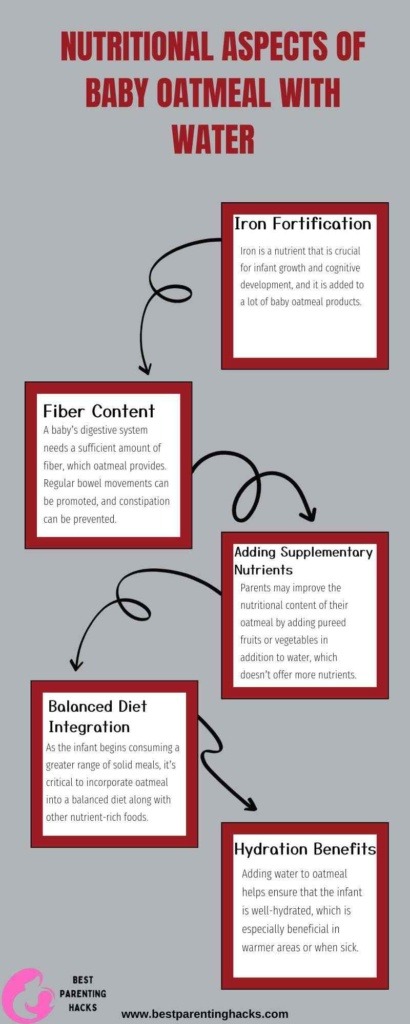
Nutritional Aspects of Baby Oatmeal with Water
While incorporating water into baby oatmeal may seem like a simple and risk-free option, it is important to carefully consider the potential impact on the nutritional value of the meal. Breastmilk and formula include extra nutrients that are absent from water. Oatmeal combined with water is not nutritionally deficient. Iron is one of the vital elements that are frequently added to baby oatmeal since it is so important to a baby’s development.
1. Iron Fortification: Iron is a nutrient that is crucial for infant growth and cognitive development, and it is added to a lot of baby oatmeal products.
2. Fiber Content: A baby’s digestive system needs a sufficient amount of fiber, which oatmeal provides. Regular bowel movements can be promoted, and constipation can be prevented.
3. Adding Supplementary Nutrients: Parents may improve the nutritional content of their oatmeal by adding pureed fruits or vegetables in addition to water, which doesn’t offer more nutrients.
4. Balanced Diet Integration: As the infant begins consuming a greater range of solid meals, it’s critical to incorporate oatmeal into a balanced diet along with other nutrient-rich foods.
5. Hydration Benefits: Adding water to oatmeal helps ensure that the infant is well-hydrated, which is especially beneficial in warmer areas or when sick.
You Might Also Like to Read: Letting Baby Taste Food at 2 Months?
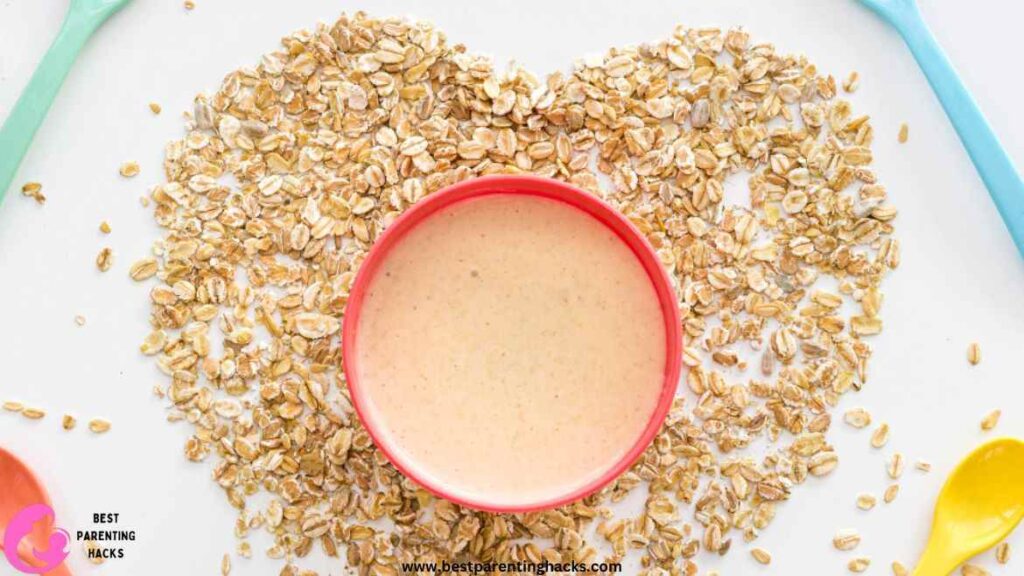
Preparing Baby Oatmeal with Water
1. Choosing the Right Oatmeal: It’s important to choose the right kind of oatmeal. It is advised to give newborns oatmeal that has been finely crushed or milled since it is simpler for them to digest. Certain baby oatmeal products are made with special ingredients that are meant to be easy on a baby’s tummy.
2. Boiling the Water: To make sure the water is pure, boil it first every time. To ensure the safety and hygiene of the baby’s food, it is imperative to take this step.. After letting the water cool to lukewarm, combine it with the oats.
3. Mixing Ratio: To get the proper consistency, the water-to-oatmeal ratio is crucial. A thinner consistency—achievable by adding additional water—is better for younger babies. You may progressively cut down on the water to thicken the oats as the baby becomes bigger.
4. Cooking the oatmeal: Preparing the oats in water is an easy step. To prevent lumps, add the oatmeal to the boiling water and stir constantly. Reduce the heat to a simmer and cook until the mixture is creamy. Usually, this procedure takes a few minutes.
5. Testing and Adjusting Consistency: It’s crucial to check the oatmeal’s consistency and temperature before giving it to your infant. To prevent burning the baby’s mouth, the oats should be warm rather than hot. You may thin down the oats by adding extra water if it’s too thick.
You Might Also Like to Read: Should I Wake My Sick Baby to Eat?
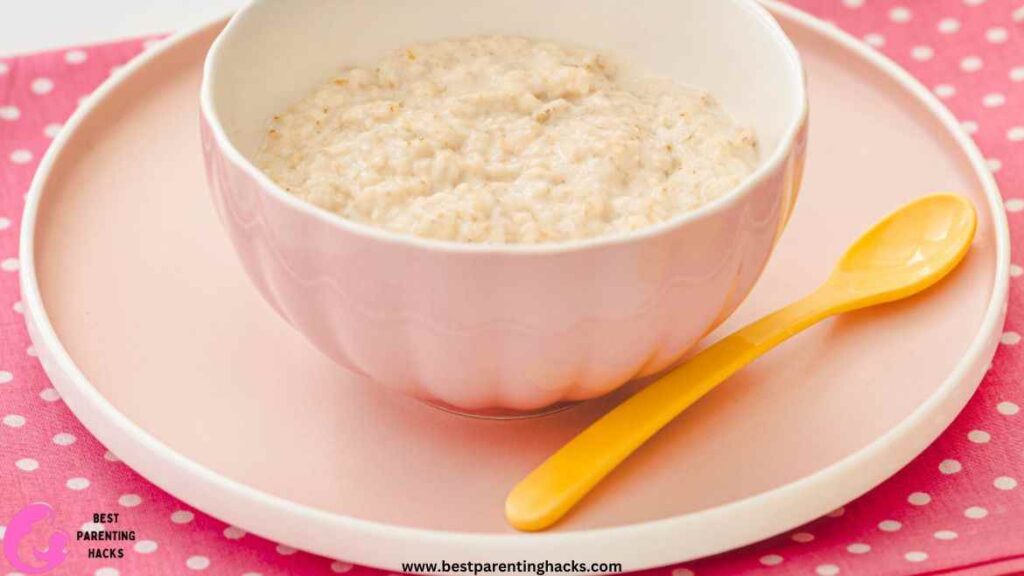
Common Concerns and Myths
1. Nutritional Adequacy: Whether oatmeal combined with water delivers enough nourishment is a typical worry. Even though it lacks the nutritional density of oatmeal combined with formula or breastfeeding, it’s still a nutritious choice when included in a balanced diet.
2. Allergies and Sensitivities: Food allergies are a common concern for parents. As water doesn’t include any of the possible allergens present in soy- or cow’s milk-based formulae, it’s the safest choice for newborns who are sensitive to allergies.
3. Fullness and Satiety: It’s a common misconception that oatmeal combined with water isn’t full. But oatmeal’s fiber content—not the liquid it’s combined with—is what makes it satiating.
4. Taste Preferences: It’s been said that infants enjoy the flavor of oats combined with formula or breast milk. Some newborns may find it difficult to take oatmeal mixed with water, but many babies find it acceptable, especially when it’s the first solid food they are given.
Personal Experiences and Tips
In my own experience, things went smoothly and successfully when I started giving my kids oatmeal mixed with water. It worked nicely for me to start with a thinner consistency and then progressively thicken it as they grew older. Every infant has different nutritional requirements and preferences, therefore it’s also critical to exercise patience and observation.
From my experience, the following advice is based on:
1. Start Slowly: Start with small amounts of oats combined with water and introduce it gradually.
2. Observe Reactions: See how your infant responds to the oats. Seek for any indications of fullness or digestive problems.
3. Experiment with Flavors: To keep oatmeal interesting as your baby becomes accustomed to it, consider adding other flavors, such as pureed fruit.
4. Consistency Adjustments: Considering your baby’s age and level of solid food digestion, don’t be afraid to make consistency adjustments.
5. Consult Healthcare Providers: For individualized guidance, always get in touch with your pediatrician or another healthcare professional when in doubt.
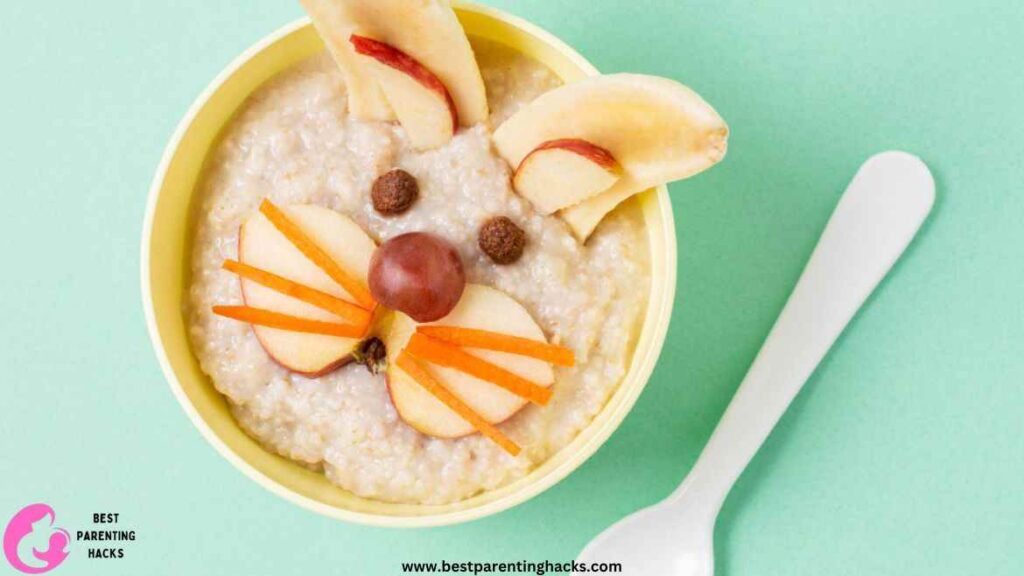
Conclusion
To sum up mixing baby oatmeal, with water is a secure way to feed your child. It’s an approach that can be adjusted based on your baby’s age, nutritional needs, and preferences. Adding oatmeal to their diet along with water can provide nutrition; however, it’s important to consider the nutritional balance. Keep in mind that every baby is unique. What works for one may not work for another. As a parent trust your instincts. Do not hesitate to seek guidance from professionals during the transition to solid foods. This is an exciting time full of new possibilities and experiences for both you and your little one.
FAQs
1. Can I combine formula with baby oats rather than water? It is possible to combine baby oats with formula. It gives your infant more nourishment and can taste better for them.
2. When is the ideal time to introduce oatmeal to my infant? Around six months of age, when babies are usually ready to start meals, baby oatmeal can be introduced.
3. Can I put fruit in my baby’s oatmeal? Of course! A wonderful approach to add fresh flavors and boost the nutritious content of infant oatmeal is to add pureed fruit.
4. Is oatmeal a daily food my infant can eat? Sure, as long as it’s a part of a healthy, diverse diet, your infant may have oatmeal every day.
5. Can I feed my infant ordinary oatmeal? Regular oatmeal, ground finely, works well after your baby is between 8 and 12 months old and has gained more experience eating solid foods.
6. Is it best to refrigerate leftover baby oatmeal with water? After the oatmeal has completely cooled, keep it in the refrigerator for up to 24 hours in an airtight container. Freeze it into ice cube trays for extended storage.
7. What is the nutritional difference between breast milk and water for baby oatmeal? Water is still a healthy choice even if it doesn’t contain as many nutrients as breastmilk or formula, especially if the baby’s diet is balanced overall.

